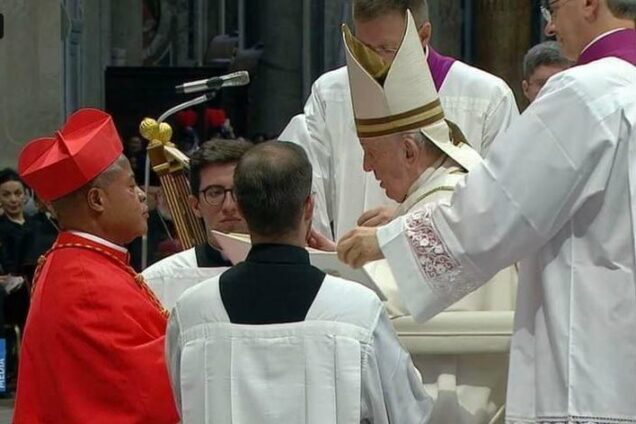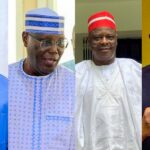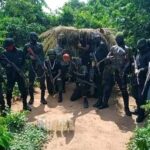His promotion as Cardinal by the Pope in May 2022 took many by surprise, including him. But recently, in an interview, Cardinal Okpaleke said that the attendant controversy that led to his unceremonious exit, was not about his personality per se but more of a refusal to accept the appointment made by the Holy Father by a group flexing its muscle in pursuit of personal, parochial interests. He added, however, that he has forgiven because to err is human but to forgive is divine.
Did your appointment as a Cardinal come to you as a surprise or were you expecting it?
I had never considered being a Cardinal, so I could not have had any expectations in that regard. The announcement of my creation as a cardinal by the Holy Father came to me as a big surprise. I got the information like everyone else. Indeed, I was informed by those who listened to the announcement. On that day, May 29, 2022, I was at St. Patrick’s Parish, Nawfija, on pastoral visitation. We were still at Mass when the announcement was made. Those who heard it, started calling. But my phone was switched off. Some called those working with me. After the mass, they broke the news to me. It was beyond my wildest imagination. I did not believe it. Moreover, with the speed at which news, both true and fake, spreads through social media, I was sceptical. But, then, as minutes turned into hours and hours into days, the reality gradually sank in. That is where we are.
As a Cardinal, what extra duty does this appointment impose?
The Code of Canon Law (Can. 349) lays out the duties of a cardinal. It is stated that cardinals constitute a special college which provides for the election of the Roman Pontiff. The cardinals also assist the Roman Pontiff either collegially when they are convoked to deal with questions of major importance, or individually when they help the Roman Pontiff through the various offices they perform, especially in the daily care of the Universal Church. In sum, besides the election of the Pope, cardinals constitute a special advisory body that the Pope consults regularly on significant ecclesiastical matters. They are close collaborators of the Roman Pontiff. On the individual level, cardinals assist the Pope by working at the different Dicasteries or departments of the Roman curia. Being a cardinal has deepened rather than changed my call of duty. As a diocesan bishop, my primary call of duty is shepherding the people of God in my diocese. The implication for me is to go about my duties as a shepherd in my diocese consciously seeking to distil salient insights therefrom to be put forward to the Holy Father for further discernment.
Your story reads like that of the Biblical stone rejected by the builders, which later became the cornerstone. Do you agree?
I am not comfortable with that imagery and wish that it is dropped altogether. Although it is often used, a deeper reflection, in my opinion, shows that the application of the imagery to the Ahiara incident is superficial and perpetuates something that is not true. First, the imagery gives the impression that the Ahiara saga was about me. But from the beginning and as long as it lasted, and with the benefit of hindsight offered by church history about the investiture controversy in the 11th Century, it was clear to me that the problem is not about me. It could have been triggered off if it were any other person not acceptable to a small group of people who feel that they are power brokers and should be deferred to by the Holy Father. So, there was nothing personal in the unfortunate incident.
I have never seen myself as rejected by the faithful of Ahiara Diocese. It was more of a refusal to accept the appointment made by the Holy Father by a group flexing its muscle in defence of whatever interests it has. The imagery of the rejected stone glosses over this. It makes the matter personal, while the real issue is about authority in the church and the refusal of papal authority by some people. Second, the imagery of the stone perpetuates the impression that all the priests and the faithful of Ahiara Diocese were united in the opposition to the papal appointment. This is not true. Many priests and lay faithful suffered greatly in defence of their true understanding of the faith and practice of the church. But social media and the human tendency to sensationalise the negative gave the impression that it was defiance by all. The stone imagery continues to perpetuate this generalisation. The imagery, therefore, distorts reality and does not keep before us the real issues. Two of these issues are: the limit and procedure of registering dissent in the Church on the one hand, and the understanding of communion in the Church as St. Paul taught us in 1 Cor. 10:16-17, on the other hand.
What life lessons have this appointment taught you?
First, one needs to trust God and hand over one’s life to God and with the Psalmist, entertain no fear even if God is leading one through the valley of darkness because God is always there with His staff and shield giving us protection (Ps. 23). Trusting in God implies asking that His will be done in one’s life always and making efforts to seek His will in prayer, discernment, and spiritual accompaniment. The second lesson is to be ever-vigilant. To use every minute of one’s waking life to strive to become the best version of oneself. My appointment gave me a bigger stage to serve God’s people. I feel my inadequacies but also the joy of having tried reasonably to become a better person through the opportunities God gave me in life. The third lesson is that we need each other. No one knows it all. God has gifted us differently so that we can draw from and support each other. This requires humility and openness to learn and to share with others. Finally, there is a need to have a commitment to something bigger than ourselves. A life lived for oneself is narrow. God has a purpose for each one of us. This purpose is to serve God by serving one another, seeking to touch positively, the lives of those we encounter and making the world at large a better place where there is love, peace, justice and kindness.
From what happened to you in the Catholic Diocese of Ahiara, from the opposition, how can the church help to curtail the issue of ethnicity from bringing schisms or sectarianism in the body of Christ?
From my perspective, ethnicity is not at the root of what happened at the Catholic Diocese of Ahiara. Remember that I am not a European appointed to a diocese in Igboland. We are all Ndi Igbo (Igbo people). We belong to the same ethnic group, but from different parts of Igboland and with different dialects of Igbo language. So, the issues are about difference and identity. Your formulation of the issue in terms of ethnicity is understandable because ethnicity is related to identity. Interestingly, the difference is at the background of every identity. Identities aggregate things or persons based on similarities and project these against a background of what is different. Cars are cars because of similar features that make them different from motorcycles, trucks or trees. Identity markers – car, male, female, Catholic, Anglican, Igbo, Hausa, Yoruba, etc. – are neutral and simply assist us to navigate the world. In other words, even ethnicity is not negative, although it could be drawn upon for negative purposes. Therefore, as soon as one says Igbo, it calls up a background of non-Igbo, those different from Ndi Igbo. Yet among Ndi Igbo, there are differences and other identity markers – Anambra, Imo, Ebonyi, etc. Among ndi Anambra, you still have differences. When we get down to the kindred, there are different families and within the families, there are different individuals. So, identity is about the interplay of similarities and differences and what is considered different depends on the focus and where one draws the line. When the focus is on ndi Anambra, the shared elements with ndi Imo as ndi Igbo are put at the background and elements that show difference are highlighted. But, as happens sometimes, the difference in dialect, geography, etc., between ndi Anambra and ndi Imo, for example, can be turned into opposition. Interestingly, the reasons for drawing identity in opposition or in antagonism are often external to the identities, maybe injected by historical circumstances. Such antagonism is maintained by groups with vested interests and deployed in the struggle for power and privileges. This is what happened in Rwanda in the late 1980s through early 1990s when neighbours who had been living side by side and marrying one another were turned into enemies of each other and Rwanda was turned into a killing field.
I have gone into this detail because the church is a teacher. God, through the Prophet Hosea, warned that “my people perish out of lack of knowledge” (Hos. 4:6). Identity is one of those issues that raise a lot of emotions, especially when hijacked and mobilised by individuals and groups with vested interests. There is need for people to pay attention more closely to the dynamics of identity and identification because as the Igbo say, onye amaghị ihe a na-eme, e were ya mebe ihe a na-eme (if you do not know what is being done, you make yourself manipulatable).
How can this truth be applied to the crisis of Ahiara Diocese?
As pointed out, the Ahiara saga is about differences. When not managed well, the difference can degenerate into indifference or opposition that triggers the taste for conquest and the attendant conflict that ensues. The church highlights the fact that God made us for communion – not in spite of, but because of our differences, God has called us into one body. Just as in God, there are three persons, but one God, a unity in difference. God always wants us human beings to be united in our differences. This is achievable through love. If this teaching is taken seriously, then conflicts will be minimized. Finally, with regard to schism or sectarianism, we know that God has given the church a teaching office or magisterium. The Council of Jerusalem in the Acts of the Apostles 15:5-32 shows us how the conflict was dealt with in the early church. Above all, it shows us that God, through the Holy Spirit, continues to guide the church through her pastors, especially when in a council. Every Christian is therefore challenged to obey those charged by God to watch over their souls (Hebrews 13:17). Sectarianism flourishes when people refuse to submit to the guidance of the Holy Spirit through those entrusted with their spiritual care.
One has heard the stories of church members paying more allegiance to masquerade cults and invading the church to flog the priests or attack them. What can the church do to stop members from running with the hare and hunting with the hound, as it were?
I like your expression, running with the hare and hunting with the hounds. It is the perpetual challenge of Christianity to get her members to convert more and more to Jesus Christ and live out their new identity in Christ Jesus. Even then, it is known that the church embraces in her bosom both saints and sinners. Our Lord Jesus chose only 12 and we know the path of their faith journey. We know of Ananias and Sapphira in Acts 5 and of Simon the magician in Acts 8:9-25. Simon got baptised, but when he saw what God was doing through the apostles, he offered them money with the words, “give me the same power so that anyone I lay my hands on will receive the Holy Spirit.” As can be seen, Simon was baptised, but not converted. As is well known, conversion is ongoing. Even the prince of the Apostles, Peter, needed the encounter at Cornelius house to realise that God has no favourites. So, as a mother, the church continues preaching in and out of season (2 Tim 4:2) fully aware that conversion is ongoing. Without losing hope, she keeps reminding those who feel that baptism is all it takes to become a Christian that it is only the first step on a journey of life towards greater intimacy with God in the bosom of the church.
Since you became Cardinal, have the Ahiara people or clergy reached out to you?
As said above, what happened at Ahiara was engineered by a group of people who may not be numerically significant. After my appointment as the Bishop of Ahiara, the priests of the diocese sent an official delegation to where I was at St. John & Paul Parish, Awka, to congratulate me. That was before discordant notes started sounding. Even while it lasted, some members of the clergy and the lay faithful, in their hundreds, periodically visited me in acknowledgement of the appointment by the Pope. At such visits, they came with buses, leaving their businesses, taking the risk to express their loyalty to the Holy Father. We usually celebrated the Eucharist, interacted and ate together. Although I was being taken good care of, they made it a point of duty to come with foodstuff to show their support. Many made phone calls and sent SMS. I am going into these details to buttress what has been said above about the inappropriateness of the stone imagery. Many people of Ahiara Diocese suffered greatly because they upheld the primacy of the authority of the Pope in the appointment of bishops. It is against this background that you will appreciate the joy with which many of them sponsored themselves to the consistory in Rome. And for your information, the Diocese of Ahiara is close to my heart. God knows why God brought us together. My history cannot be written without mentioning Ahiara, and neither can the history of the Diocese be written without the mention of Peter Ebere Okpaleke, as the second Bishop of the Diocese.
Tell us highlights of your memories of your elevation as a Catholic Cardinal in Rome.
There were the public and the private consistories. I arrived in Rome on August 23, 2022, with my secretary and went straight to a retreat house for a retreat. I ended the retreat on the evening of August 26, 2022. On August 27, 2022, there was the public consistory. It started by 4pm and 20 new cardinals were created. The Nigerian contingent – more than 300 people – stood out. Indeed, they stole the show in their colourful outfits. The Nigerian community in Rome brought their dance. It was wonderful. The private consistory, that is, a meeting of all the Cardinals of the world with the Holy Father began on August 29, 2022 and ended on August 31. There were also more than eight interviews with different communication outfits. As you can see, it was a busy period.
Tell us about your birth and background.
I was born on March 1, 1963, with my late twin brother, Paul, to late Reuben Ezeuko Okpaleke and late Bridget Ekejimma Okpaleke of Umuokpalawuzie kindred, Umuocha village, Amesi, Aguata Local Government Area of Anambra State. I grew up with my maternal grandmother, Evelyn Abiahuaku Ibekwe at Uga. I was told that my grandmother visited my mother and I followed her home. That I have no memory of this shows how tender I was when this happened.
Could you recall your call to the priesthood?
Yes, of course. It started with my serving at the altar. I remember that first time because I was conscripted as it were. It was raining heavily, but my aunt, Patricia Ibekwe, took me to morning Mass, at St. Vincent Otikpo, Uga. No altar server was in attendance. The priest, Late Rev. Fr. Alfred Edokobi, invited me to the sacristy. He vested me as an altar server with the consoling instruction: “if I call you, you come, if I say sit, you sit.” That was the beginning of my journey. I enrolled with the altar servers. Along the line, I started having the desire to become a priest. After completing my studies at Uga Boys’ Secondary School in 1981, I briefly assisted late Rev. Fr. Elias Anyaorah at Christ Redeemer College Amesi. When I opened up to him about my desire to become a priest, he gave me a letter of recommendation to late Archbishop Albert Kanene (AK) Obiefuna, the then Bishop of the Catholic Diocese of Awka and later the Archbishop of Onitsha. I was admitted into St. John Bosco Seminary Isuaniocha in 1982 and the rest is history.





